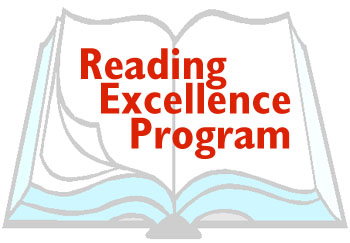A r c h i v e d I n f o r m a t i o n

The Reading Excellence Program competitively awards grants to state education agencies, which in turn award subgrants to eligible local school districts.
The Reading Excellence Program has awarded $327,627,438 million in grants to help improve the reading skills of pre kindergarten through third grade children. The grants, under the Reading Excellence Act (REA) program, will help 13 additional states use scientifically based reading research to improve reading in over 400 schools.
The 13 states that received REA grants this year include:
Alaska, Arkansas, Connecticut, Georgia, Hawaii, Indiana, Minnesota, Montana, Nevada, New Hampshire, New York, South Carolina, and Tennessee.
States competed for the three year grants by creating plans for improving reading in the primary grades. An expert panel of 21 nationally known experts in reading, research, and school reform evaluated the applications. The Education Department (ED), the National Institute for Child Health and Human Development (NICHD), the National Institute for Literacy, and the National Academy of Sciences nominated the panel members.
The Reading Excellence program was designed to provide children with the readiness skills and support they need to learn to read once they enter school; teach every child to read by the end of the third grade; and use research-based methods to improve the instructional practices of teachers and other instructional staff.
The primary activities are:
- Professional development
- Tutoring
- Family literacy
- Transition programs for kindergarten students
Grants are competitively awarded to states. States that are awarded must run two grant competitions: (1) Local Reading Improvement Grants and (2) Tutorial Assistance Grants.
Eligible applicants for the local reading improvement grants include: (1) local districts that have at least one school in Title I school improvement status; (2) districts with the highest or second highest percentages of poverty in the State; and (3) districts with the highest or second highest number of poor children in the State. Eligible applicants for the tutorial assistance grants include the above named districts as well as districts that are located in an empowerment zone or enterprise community.
Page last modified on September 11, 2002 (skh)